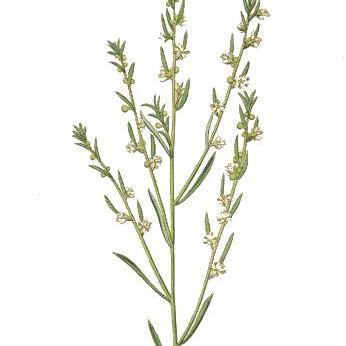Male flowers: pedicels jointed; sepals 5, united at the base, imbricate; petals 5, free, clawed, open or imbricate; disk glands in 1–3 series: 2–7 per sepal, (0)1–3 per petal, 0–8 on the receptacle; stamens 5, oppositipetalous, borne on a receptacular column, anthers dorsifixed, introrse, longitudinally dehiscent; pistillode cylindrical, borne on top of the column.
Female flowers: sepals and petals ± as in the male, but persistent and becoming hardened in fruit; disk glands usually only in 1 series, on the sepals; ovary trilocular, with 1 ovule per loculus; styles 3, free or united at the base, bifid or bipartite.
Fruit ± spherical, dehiscing septicidally into 3 bivalved cocci; endocarp woody; septa thin, free or adhering to the columella.
Seeds ovoid-ellipsoid; testa crustaceous, shiny, black; caruncle conical, protuberant; albumen fleshy; cotyledons broad, flat.
Leaves alternate, often exstipulate, shortly petiolate, simple, entire, penninerved, often pustulate.
Dioecious, occasionally monoecious, small trees, shrubs or woody herbs.
Flowers in axillary fascicles, or female flowers solitary.
Indumentum simple or absent.

